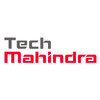Filter interviews by
AWS ProServe Big Data Consultant Interview Questions and Answers
AWS ProServe Big Data Consultant Interview Experiences
1 interview found

(2 Questions)
- Q1. Airflow dag, hbase, cloud skills
- Q2. Scenario based question
Window function in sql, spark optimization
Interview Preparation Tips
Top trending discussions






Interview questions from similar companies

I applied via Campus Placement and was interviewed before May 2020. There were 4 interview rounds.
Interview Questionnaire
1 Question
- Q1. TELL ME ABOUT YOURSELF
Interview Preparation Tips

I applied via Recruitment Consultant and was interviewed before Aug 2020. There was 1 interview round.
Interview Questionnaire
1 Question
- Q1. Tell me about yourself
Interview Preparation Tips

I applied via Referral and was interviewed before Jun 2020. There were 5 interview rounds.
Interview Questionnaire
1 Question
- Q1. My expected tenure, education, technical insights
Interview Preparation Tips

I applied via Naukri.com and was interviewed before Feb 2021. There were 2 interview rounds.
(1 Question)
- Q1. Questions on Salesforce Basics. One can learn all great features in Salesforce.com but we must know the basic admin functionalities and features in Saleforce.
(1 Question)
- Q1. The questions will be on your career, Resume. They will look for story telling skills, can you be a team player and individual player, etc. Can be technical as well.
Interview Preparation Tips

I applied via Campus Placement and was interviewed before Feb 2021. There were 2 interview rounds.

Focus on industry-specific nuances
Interview Preparation Tips

I applied via Naukri.com and was interviewed in Jun 2019. There were 3 interview rounds.
Interview Questionnaire
2 Questions
- Q1. Configuration Management, data modelling, CI relationships, Problem management process flow, SIAM, integration, cmdb reports, KPIs.
- Q2. General introduction, projects handled in the past,
Interview Preparation Tips

I applied via Naukri.com and was interviewed before May 2021. There were 2 interview rounds.

Coding questions will be given
Interview Preparation Tips

I applied via Walk-in and was interviewed before Oct 2019. There were 5 interview rounds.
Interview Questionnaire
9 Questions
- Q1. Tell us about your self ?
- Q2. What you know about TCS?
- Q3. What is your biggest achievement till now?
- Q4. Do you have any weakness?
- Q5. Any break between your study ?
- Q6. How long you will serve for our company?
- Q7. What you have decided for you further studies?
- Q8. How you will be benefit for our company? Why we hire you?
- Q9. Why you want to join TCS only?
Interview Preparation Tips

I applied via Referral and was interviewed before Oct 2020. There was 1 interview round.
Interview Questionnaire
2 Questions
- Q1. How are you tell me about your self
- Q2. Your past experience
Interview Preparation Tips
AWS ProServe Interview FAQs
Tell us how to improve this page.
AWS ProServe Interviews By Designations
Interview Questions for Popular Designations
- Big Data Engineer Interview Questions
- Software Developer Interview Questions
- Java Developer Interview Questions
- Senior Database Developer Interview Questions
- Data Analyst Interview Questions
- Data Engineer Interview Questions
- Big Data Developer Interview Questions
- Senior Software Developer Interview Questions
- Show more
AWS ProServe Big Data Consultant Interview Process
based on 1 interview
Interview experience
Interview Questions from Similar Companies
|
Cloud Consultant
4
salaries
| ₹25.2 L/yr - ₹38 L/yr |
|
Cloud Architect
4
salaries
| ₹36 L/yr - ₹73 L/yr |
|
Software Engineer
3
salaries
| ₹9 L/yr - ₹10 L/yr |
|
Consultant
3
salaries
| ₹32.5 L/yr - ₹40 L/yr |
|
Sde1
3
salaries
| ₹15 L/yr - ₹15 L/yr |

TCS

Accenture

Wipro

Cognizant
- Home >
- Interviews >
- AWS ProServe Interview Questions >
- AWS ProServe Big Data Consultant Interview Questions








